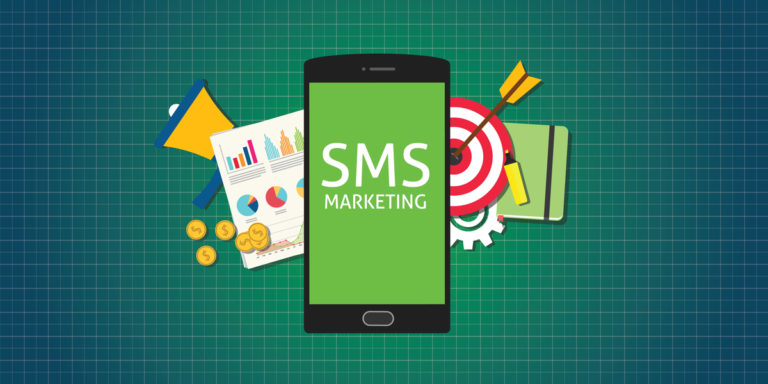Having trouble selling your products? It happens to every retailer. Depending on the season, your audience, or marketing techniques, you may not be able to sell your items and end up with a surplus of inventory. This article discusses how you can increase your sales and get your non-selling products sold quickly and efficiently.
What is a Non-Selling Product?
A non-selling product is an inventory that sits on your shelves or in your warehouse longer than expected. It could be the result of bad pricing, presentation, or positioning on the market. More often than not, retailers will place these items in the clearance section, yet they still won’t sell, even if they are good quality products and are at a decent price.
Inventory that has been sitting on the shelves for more than six months is a sign that you have some non-selling products. Here’s how to sell those products.
How Do You Sell Products that Do Not Sell?
There are ways to improve sales of a non-selling product and make a profit. Here are just a few ideas on how to clear your stock and avoid losing money on your inventory.
Clearance and Seasonal Sales
If you’re trying to get rid of your items and do not have time to spare, consider a clearance sale. You can move all excess stock to a sale section, encouraging buyers to spend less. It is the simplest and most obvious way to clear out inventory. Consider offering 35% to 70% discounts to cleanse your store of all old inventory. It may seem like a high discount to offer, but it will pay off in the long run by cleaning up your inventory and allowing for newer items to be sold.

Remarket the Product
Revamping your product’s image can make a big difference in how it sells. See what changes you can make and how you can market your item in a fresh way that appeals to your customers. Ideas include:
- Take new product photos
- Reword the description to sound fresher
- Try left-digit pricing (pricing your items with a .99 instead of a round number)
- Place items in new locations on your store’s site
You can also consider rebranding. After watching its number plummet, LEGO rebranded its items to appeal to kids once again in the early 2000s. They added digital channels that drew in not only children but adults as well. They added movies, video games, and LEGO-themed entertainment parks, which led to a revival that the company hadn’t experienced in decades.
Bundle Non-Selling Products
If you bundle your products, you can make your inventory look much more appealing to customers. Shoppers who want to buy something specific will consider the item even if it’s in a bundle. This is a convenient way to get rid of items that cannot sell on their own. Once you bundle them with a highly desirable item at a reasonable price, they will most likely sell. Consider bundling compatible items together, such as an old Polaroid and its film. This way, it makes sense to purchase both items, and the customer is saving money as well.
Offer a Basic and Premium Level of the Same Item
This encourages the shopper to pay for the less expensive item (the one that is selling less) when he or she sees the premium, higher-priced product. For example, Williams Sonoma used this strategy to sell its $275 bread-baker. The item wasn’t selling, and the company did not want to abandon a good, fully functioning item. So, they decided to introduce a similar, but better product to their consumers for a higher price. They priced it at $429 and placed it next to the $275 option, making the cheaper one much more appealing to consumers. Sales for the original bread machine skyrocketed.
Set Up a New Digital Marketing Campaign For Selling Products Online
Another way to improve the sales of products that are slow-moving is to set up a new digital marketing campaign. PPC is a great starting point for selling products online.
Getting Started with PPC
Setting up a PPC campaign is a great way to reach a new audience. PPC, or pay-per-click advertising, is when you bid on a phrase so your ad shows up at the top of a consumer’s search results. Using PPC to move non-selling products would look like this:
- Figure out what search terms relate to the product you are having trouble selling. For example, if you had a bread machine, you might bid on terms like “best bread machine,” “bread maker machine,” or even “how to make bread without a bread machine.” Then, when the consumer types one of these terms into Google, an ad for your product will show up as a search result.
- Create a high-quality landing page for your product. If you make sure the landing page includes all the search terms you’re bidding on, then you will increase the quality score of your page, which will mean Google will reward you by charging you less to have your PPC ad higher on the results page. Just as important is making sure your page has a clear call to action, like a prominent “Buy Now!” button.
- Track your sales to make sure your PPC spending is still leaving you with a tidy profit.

This is just one example of how a digital marketing strategy helps you sell products. There is everything from SEO to email marketing to setting up a campaign with an influencer on social media. The options for driving traffic to your site are endless.
Switching up your sales strategy to include digital marketing may be just the edge you need to move that unmovable product. But, to get the most out of your ad spend, you will want to invest in the best tools for tracking your efforts.
Lead Distribution Software
The first step of a digital marketing campaign is to determine who your customer is and what they are looking for. Who is engaging with your brand? Who is clicking your ads and opening your emails? Focus on finding your target audience. You can do this by using lead distribution software to help optimize your sales funnel. This way, you can quickly convert leads into customers.

Then, you use the insights gained from your consumers. You can determine what consumers are likely to be interested in and what they are likely to purchase. This can help you to personalize future marketing plans. Once you know a customer’s past behavior, you can send them targeted ads and emails that are relevant to what they like and want to buy.
Why Products Become Harder to Sell
Why do good quality products not sell? This can happen for several reasons. Weather changes, economic slowdown, or an employer closing its shops can prevent products from being sold. However, you still have options. Here are several more reasons why your products are hard to sell:
- Not properly displayed for customers to see: You will need to present your products in the best possible way to draw customers in. If no one sees it, how would they know to buy it?
- The item is too pricey: If it costs too much, the customer might think it is not worth the price. Use discounts to encourage shopping at your store.
- The item is too cheap: This may sound counterintuitive, but a low price on an item is not necessarily a good thing. Customers associate low prices with poor quality.
- There are little to no details about the product: If no one knows what the item is or does, then they will not be interested in purchasing it. Include images, customer reviews, videos, and Q&A. No one knows the product even exists: You must properly market the product so people are aware of it. Social media and online forums are good places to start and attract potential customers to your product.
- You may be targeting the wrong audience or your marketing is limited. If your audience isn’t interested in the item, they are not going to want to buy it. If your product is not in demand, no one will buy it.
How You Can Avoid Problems With Non-Selling Products Next Time
After you clear out your non-selling inventory, you will do well not to make the same mistakes again. Here are some tips on how to make sure your items will sell well.

Act on Customer Feedback
In order to advance in selling products, you can ask your customers what they want. You can use an email list or social media to connect with them and ask for suggestions. Survey Monkey is another popular tool used to find out information from your customers. Forums are another option. You can conduct customer behavior analysis and find out what your audience is looking for, then use forums to answer whatever questions they may have regarding your products. For example, Quora and Reddit are popular forums where people gather and discuss anything and everything. It’s a great way to assess who your audience is and what they want out of your products.
After you address the concerns and questions of your customers, you will have a better understanding of what products you should sell and what you should avoid. This way you can prepare for the market and have an easier time selling your inventory.

Understand the Cycle of Your Product
Every product goes through its own life cycle. Some categories of products sell faster (such as electronics and fashion). This depends on the demand for the product, the marketing strategy, and new trends within the industry. All these variables can lead to a loss in demand for the product, which leads to a drop in sales. Something the seller can do to avoid these issues is to track the cycle of their products on the market and plan out a timeline for when they can introduce their products at the right time.
To Sum Up
Having products that do not sell is not uncommon in the retail industry. Every retailer and store owner experiences problems with non-selling products from time to time. While it can be frustrating, there are techniques you can use to encourage sales and strengthen the appeal of your products. Whether it is bundle selling, rebranding, or finding new marketing methods, you have options.


